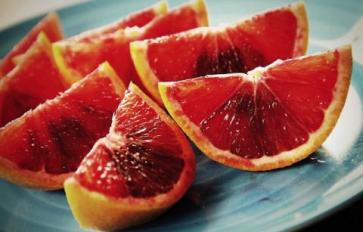
Spring is a time of new beginnings, when the world shakes to life again, breathing into beautiful young colors and fresh, full scents of revival. And, amidst all the new life popping forth, one can also find some tasty wild plants, if you know where to look…or smell!
Wild-growing plants set forth greenery that is as young and rich in taste as it is in color. Not only are some of these wild, forage-able plants a perky green pop of color and flavor, but they are also packed with some of nature’s best nutrients. Look out for – or seek out – some of these wild plants to delight your palate and brighten your plate.
(It’s important to note, before reading on, that when foraging for anything wild, proper identification is KEY. If you are unsure, ask an experienced and knowledgeable friend, consult the internet, books, etc. before consuming a new wild. Always clean and/or cook wild plants well.)
Ramps, aka Wild Leeks (Allium tricoccum)
Time: Mid-March through April
Spot them: Common in mountain hardwood forests of the Appalachian region, these pungent oniony-smelling wilds love rich moist soils. They grow in groups, and the 1-2 broad leaves (a couple inches wide and 4-12 inches long) can sometimes be mistaken for scent-less lily of the valley. See a photo of ramps here.
Eat them: The entire plant, bulb to leaf, can be consumed; however, this is part of the reason the ramp population is at risk. Eat ramps like other alliums (green onions, shallots, etc.) in pasta dishes, salads, with eggs, or baked in savory breads.
Fiddleheads -- Ostrich Fern (Matteuccia struthiopteris) on the east coast, or Lady Fern (Athyrium filix-femina) on the west coast
Time: Early April
Spot them: In fertile, wet soils along the banks of rivers, streams and swampy areas. Look for the bright green of the stems, which grow in clumps of 6 or so curled ferns. Only the Ostrich or Lady ferns are edible, and have more of a suede-like texture versus the fuzzy, hairy texture of inedible bracken, cinnamon and interrupted ferns. See photos of fiddleheads here.
Eat them: Harvest the tightly curled tops when they are between 1 and 4 inches high; the tighter the curl, the better. Brush off the brown papery covering and wash and cook/ steam/sauté thoroughly with eggs, in stir fry, for a salad, or in pasta dishes.
Common or Stinging Nettle (Urtica dioica)
Time: March and April
Spot them: Among other weeds and densely growing wilds, along disturbed areas such as river banks, and among thick brambles. The most distinguishing feature is the stinging hairs on the stem and toothy leaves. See photos of stinging nettle here.
Eat them: Using gloves, harvest the [tops of the] plant before it flowers, when young and tender. Cooking stinging nettle even just a bit completely eliminates the “sting,” and it tastes like spinach when sautéed. Use it in salads, quiche, soups, pasta dishes, make a pesto, or dry it for a tea infusion.
Daylily (Hemerocallis fulva)
Time: Late March through April
Spot them: In sunny, open areas, growing wild along roadsides. Look first for the early shoots with scoop-like young leaves (which can be easily mistaken for flat, fan-like iris) and which grow to be long leaves up to two feet long. The orange, 6-petaled flowers bloom off a long stem for just a day, per this wild flower’s namesake. See photos of daylily here.
Eat them: Early on, harvest shoots no taller than 8” to sauté and/or tubers (which can be treated like potatoes and cook up quickly). Closed, green flower buds can be steamed, sautéed, stir fried, or pickled. Flowers that have bloomed make a colorful addition to a fresh salad.
Violets, aka Johnny Jump-ups (Viola sororia)
Time: Early April
Spot them: In your lawn or other open spaces, before the grass takes off. Keep an eye out for these compact, low-lying (4” from the ground) bunches of heart-shaped leaves with 5-petaled flowers with white-blue-purple colorings. The flowers are vertically symmetrical, with two upper and three lower petals. See photos of violets here.
Eat them: Garnish a salad or dessert with the beautiful, raw edible flowers, and harvest the nutrient-dense leaves for use in salads or soups. The leaves contain mucilage, which is soothing for the throat.








